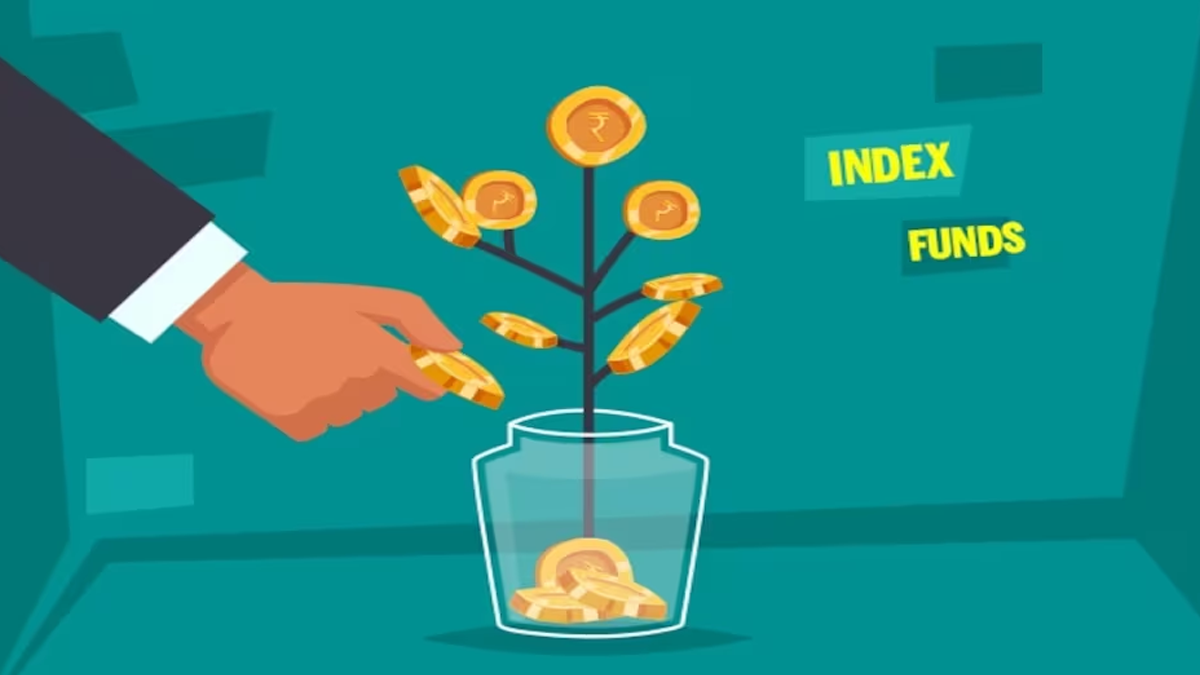Unlock the world of wealth-building with our comprehensive guide on how to invest in index funds for beginners. Navigate the investing landscape effortlessly as you discover step-by-step strategies tailored just for you. From understanding the basics to crafting a winning portfolio, this guide ensures you embark on your investment journey confidently.
Welcome, future investors! Have you ever wondered how to make your money work for you without diving into the complex world of stocks? That’s where index funds swoop in to save the day. Let’s break it down on how to invest in index funds.
Okay, so what are these mystical index funds? Think of them as a bunch of investments bundled into a neat package. It’s like buying a mixtape of the stock market’s greatest hits. But instead of handpicking stocks, you get a diverse slice of the whole market.
Now, why should you care about investing, especially if you’re just starting in the adulting game? Well, here’s the deal: investing is your golden ticket to financial freedom like Icarus Fund. Letting your money grow over time beats hiding it under your mattress. Plus, you want that dream vacation or a cozy retirement, right? Investing is the key.
Hold onto your hats because we’ve got your back! Our guide isn’t your typical snooze-fest. It’s a treasure map to navigate the world of index funds without the confusing jargon. We promise to turn you from an investing newbie into a confident financial rockstar.
Ready to dive into the universe of index funds? Buckle up, and let’s embark on this exciting journey together!
Understanding index funds
Alright, squad, let’s unravel the mystery of how to invest in index funds.
- Definition and concept
- How index funds differ from other investment options
- Advantages of choosing index funds for beginners
Definition and concept
Imagine you’re at an all-you-can-eat buffet, and instead of choosing each dish, you grab a bit of everything. That’s the vibe of index funds. They’re like a buffet of investments, offering a slice of the entire stock market pie. There is no need to stress over picking individual stocks; you’re getting a piece of the action without the headache.
How index funds differ from other investment options:
Now, let’s talk about the cool factor. Unlike other investment options where you play stock-picker and try to outsmart the market (spoiler alert: it’s tough), index funds take a chill pill. They don’t rely on guesswork or hiring a fortune teller to predict market trends.
Instead, they mirror a specific market index, like the S&P 500. It’s like having a backstage pass to the stock market concert without the VIP stress.
Advantages of choosing index funds for beginners
Let’s look at some of the advantages of index funds:
Diversification: Index funds offer a diverse investment portfolio, akin to the friendly neighborhood Spider-man, ensuring that beginners don’t put all their eggs in one basket.
Dependability: These funds are dependable, providing a steady and reliable investment experience for beginners who are just getting started in the world of investing.
Risk Mitigation: By spreading investments across a wide range of assets, index funds act as a safeguard against significant losses, offering a more secure investment journey for beginners.
Minimal Fees: One of the major perks is minimal fees, ensuring that a significant portion of returns stays in the pockets of investors rather than being consumed by high Wall Street charges.
Financial Efficiency: Choosing index funds means more moolah (money) in your pocket, highlighting their cost-effectiveness compared to actively managed funds.
Training Wheels of Investing: Index funds serve as the training wheels of investing, providing a stable and supportive foundation for beginners as they learn the ins and outs of the investment game.
Steady Ride: Investors can enjoy a steady ride with index funds, reducing the volatility often associated with individual stock picking and allowing for a smoother learning curve.
Laid-back Heroes: In a nutshell, index funds are the laid-back heroes of the investing world, making them an ideal choice for beginners seeking a low-stress and straightforward investment strategy.
Encouraging Learning: These funds facilitate a learning-friendly environment, allowing beginners to grasp the basics of investing without the intense pressure associated with more complex investment options.
Wave Riding: Ready to ride the wave of financial growth? Index funds provide a hassle-free and user-friendly entry point for beginners, encouraging a positive and continuous learning experience.

Getting started: steps for beginners
Alright, brave souls, it’s time to dip our toes into the investing pool and learn how to invest in index funds.
- Setting financial goals
- Assessing risk tolerance
- Establishing an investment budget
Setting financial goals
First things first—what are your money dreams? Whether it’s cruising in a shiny convertible or sipping coconut water on a beach, set clear financial goals. Think short-term like that weekend getaway, mid-term like buying a car, and long-term like retiring in style. Knowing your goals will be your North Star in this investing adventure.
Assessing risk tolerance
Now, let’s talk about risk. Imagine you’re on a roller coaster—some love the thrill, while others prefer a gentle ride. The same goes for investing. Figure out your risk tolerance. Are you the roller coaster daredevil or more of a teacup ride enthusiast? Knowing this helps you choose investments that match your comfort level.
Establishing an investment budget
Time to chat about the B-word—budget. Before diving into the investing fiesta, set up a solid budget. Track your income, map out expenses, and decide how much you can toss into the investment jar. It’s like planning your spending party. Remember, investing is a marathon, not a sprint. Start small, then ramp it up as you get comfortable.
Now that we’ve laid the groundwork, you’re ready to rock this investing thing! Keep those goals in sight, ride the waves of risk, and budget like a financial ninja. Next stop: Index Fund Successville!
Selecting the right index funds
Alright, rookie investors, time to pick the superheroes for your financial squad!
- Overview of different index fund types
- Factors to consider when choosing funds
- Diversification strategies for a well-balanced portfolio
Overview of different index fund types
Imagine you’re in an ice cream shop, and the options are endless. Index funds are a bit like that, offering various flavors to suit your taste. There are stock index funds, bond index funds, and even a mix like a Neapolitan combo. Each type plays a different role in your financial feast, so it’s crucial to understand what are the options and how to invest in index funds.
Factors to consider when choosing funds
Now, let’s talk strategy. Picking the right index fund isn’t a blindfolded dart throw. It’s more like assembling a dream team. Consider factors like fees (nobody likes hidden costs), the fund’s track record (like checking reviews before trying a new restaurant), and the manager’s expertise. These factors ensure you’re not just blindly throwing money into the financial abyss.
Diversification strategies for a well-balanced portfolio
Picture this: you have a pizza with all your favorite toppings. That’s the goal for your investment portfolio—diversification. Spread your money across different types of index funds. If one slice (or sector) isn’t having a good day, the others might be thriving. It’s like the ultimate financial buffet, minimizing risk and maximizing potential returns.
So, when choosing your index funds, think variety, think strategy and think about building a financial feast that’ll leave you satisfied for years to come! Time to curate that winning lineup!
Opening an investment account
In our journey of learning how to invest in index funds, it’s time to open the gates to the investing playground!
- Choosing a brokerage platform
- Step-by-step account setup guide
- Tips for navigating investment platforms
Choosing a brokerage platform
Think of a brokerage platform as your financial DJ—setting the vibe for your investment party. Pick a platform that matches your style. Look for user-friendly interfaces, low fees (no one likes a party crasher), and a track record of reliability. Popular platforms include Robinhood, Fidelity, and Vanguard, so you’ve got options like a buffet when considering how to invest in index funds.
Step-by-step account setup guide
Now, let’s get those dancing shoes on! Setting up your investment account is easier than mastering the cha-cha. First, click the “Sign Up” button. Then, toss in your basic info, like your name and email.
They might ask about your financial goals, but don’t stress—it’s just a way to tailor the experience to you. Lastly, link your bank account. Boom! You’re officially on the guest list for the investment party.
Tips for navigating investment platforms
Ready to mingle in the world of stocks and bonds? Here are some tips for smooth sailing:
- Explore the dashboard: Get comfy with the platform’s dashboard. It’s like the control center for your investments.
- Check fees and charges: Ain’t nobody has time for surprise fees. Check the fine print to avoid any unwanted financial plot twists.
- Learn the lingo: Stocks, ETFs, IRAs—oh my! Familiarize yourself with the lingo. It’s like being fluent in a new financial language.
- Stay informed: Platforms often have nifty features like news updates and market insights. Keep an eye on these—they’re like your investing sidekicks.
Congratulations! You’ve now officially stepped into the world of investment accounts. Time to make those dollars dance!

Making your first investment
Time to put on your investing cap because we’re diving into the thrill of making that first move.
- Understanding how to buy shares of index funds
- Timing considerations
- Common mistakes to avoid
Understanding how to invest in index funds
Buying shares is like grabbing a piece of the investing pie. Here’s the lowdown: find the index fund you fancy on your brokerage platform, hit that “Buy” button, specify the amount you want, and voilà! You’re officially a shareholder. It’s like online shopping but for your financial future.
Timing considerations
Now, about timing—think of it like catching a wave. While predicting the market is trickier than guessing your grandma’s secret recipe, aim for consistency. Don’t stress about catching the absolute lowest point.
Set up a routine—like investing a fixed amount every month. It’s called dollar-cost averaging, and it takes the pressure off nailing the perfect timing. Ride the waves consistently, and you’ll be golden.
Common mistakes to avoid
Let’s talk pitfalls. First off, don’t let emotions take the wheel. Investing isn’t a roller coaster of feelings; it’s a strategic dance. Avoid panicking when markets dip and resist the FOMO (Fear of Missing Out) when everyone’s hyping a hot investment. Stay cool, stay strategic.
Also, steer clear of putting all your eggs in one basket. Diversify your investments, spread the love among different index funds. It’s like having multiple dessert options—you never know which one will be the sweetest.
Making your first investment is like stepping onto the dance floor. Sure, it might feel a bit nerve-wracking at first, but with the right moves, you’ll be grooving to the rhythm of financial success. Time to take that leap!
Monitoring and adjusting your portfolio
So future financial wizards, it’s time to put on your detective hats and dive into the world of portfolio monitoring!
- Importance of regular portfolio reviews
- Rebalancing strategies
- Staying informed about market trends
Importance of regular portfolio reviews
Picture this: you’re captaining a ship. Would you set sail without checking your compass? Nope! Similarly, regularly reviewing your investment portfolio is like navigating the financial seas.
Check-in to make sure your investments still align with your goals. Life changes, and so should your portfolio. It’s not a one-size-fits-all kinda deal.
Rebalancing strategies
Ever had a pizza with all the toppings on one side? Not ideal, right? The same goes for your investments. Rebalancing is the secret sauce. If one slice (investment) gets too big or too small, it’s time for a tweak. Sell a bit of the overgrown slice and beef up the smaller ones. It’s like ensuring every bite is a perfect mix. Delicious and strategic!
Staying informed about market trends
Let’s talk about staying in the loop. The market is like a party—you want to know who’s who and what’s what. Keep an eye on the news, but don’t let it dictate your every move. Trends come and go, but a well-balanced portfolio stands the test of time. It’s like being the trendsetter, not the trendfollower.
Monitoring and adjusting your portfolio is the secret sauce to long-term financial success. It’s not about set-and-forget; it’s about being the captain of your financial ship, adjusting your sails to catch the best winds. Now, let’s set sail toward that financial horizon!
Handling market volatility
Let’s buckle up because we’re about to talk about the roller coaster of the financial world—market volatility!
- Building a resilient mindset
- Strategies for dealing with market fluctuations
- Long-term perspective and patience
Building a resilient mindset
First things first, let’s talk mindset. Think of market volatility like a bumpy road trip. Instead of screaming at every pothole, embrace the bumps. Building a resilient mindset means understanding that markets can be a bit wild sometimes. It’s not about panicking; it’s about staying cool, calm, and collected. Picture it as a financial yoga session for your mind.
Strategies for dealing with market fluctuations
Now, onto strategies. When the market throws a curveball, don’t duck and cover. Instead, consider it a chance to shine. Keep some cash handy for those market sales, like a shopping spree for discounted stocks. Dollar-cost averaging is your secret weapon here—investing a fixed amount regularly, regardless of market ups and downs. It’s like grabbing stocks on sale every month.
Long-term perspective and patience
Patience is your investing superpower. Picture the market as a hyperactive toddler—it can be all over the place, but it eventually grows up. Adopt a long-term perspective. The stock market isn’t a sprint; it’s a marathon.
Sure, there might be a stumble or two, but the finish line is where the real victory lies. Think of it like planting seeds in your financial garden; with time, they grow into mighty oak trees.
Handling market volatility is like riding a wave. You might get tossed around a bit, but with the right mindset, savvy strategies, and a sprinkle of patience, you’ll be riding high in the end. Get ready to navigate the financial seas with confidence!
Frequently asked questions
Alright, future investors, let’s tackle the burning questions you’ve got swirling in your financial brains about how to invest in index funds
- Addressing common concerns of beginners
- Clarifying misconceptions about index fund investments
Addressing common concerns of beginners
Let’s look at some of the concerns of how to invest in index funds.
- Is this like gambling?
Answer: Not at all! Investing in index funds is more like planting seeds than throwing dice. It’s a strategic, long-term game, not a roll of the dice in a casino.
- What if the market crashes?
Answer: Ah, the big crash question. It happens, but history shows markets bounce back. Stay calm, keep your eyes on the long game, and think of it as a temporary setback, not a financial apocalypse.
Clarifying misconceptions about index fund investments
- Aren’t fees a wallet-draining nightmare?
Clarification: Nope! Index funds are the frugal superhero of investments. Their fees are like the clearance section of a store—reasonable and affordable. No need to break the bank here.
- Don’t you need a finance degree for this?
Clarification: Absolutely not! You don’t need a fancy degree to rock the investing world. Index funds are your friendly, approachable sidekick in the financial journey. Simple, straightforward, and perfect for beginners.
There you have it, folks! Your burning questions were answered and misconceptions straightened out. Investing doesn’t have to be a mystery; it’s like learning to ride a bike. A bit wobbly at first, but with the right guidance, you’ll be cruising in no time!
Conclusion
In conclusion, our guide is a comprehensive roadmap for beginners venturing into the empowering world of how to invest in index funds. We’ve simplified the intricacies of investing, presenting it in an accessible and engaging manner. Index funds, our laid-back heroes, offer a diverse approach to wealth-building without the complexities of individual stock selection.
This guide on how to invest in index funds covers essential steps, from understanding basics to setting financial goals and assessing risk tolerance. It provides actionable strategies for navigating the investment landscape, emphasizing the importance of choosing the right index funds for a well-rounded portfolio.
Opening an investment account is made straightforward with step-by-step guidance, preparing beginners for active participation in the investment arena. The guide demystifies making the first investment, advocating consistency over timing and highlighting common pitfalls to avoid.
Monitoring and adjusting the portfolio, akin to captaining a ship through financial seas, are vital for long-term success. The guide underscores the significance of regular reviews, rebalancing strategies, and staying informed about market trends.
Addressing market volatility, the guide encourages building a resilient mindset, implementing effective strategies, and adopting a long-term perspective. Just like riding a wave, handling market fluctuations requires the right mindset, savvy strategies, and patience.
Armed with the knowledge from this guide, beginners become captains of their financial ships, confidently navigating the seas of index fund investing. It positions them to embrace the world of wealth-building, ready to ride the wave toward their financial horizon. Happy investing!




